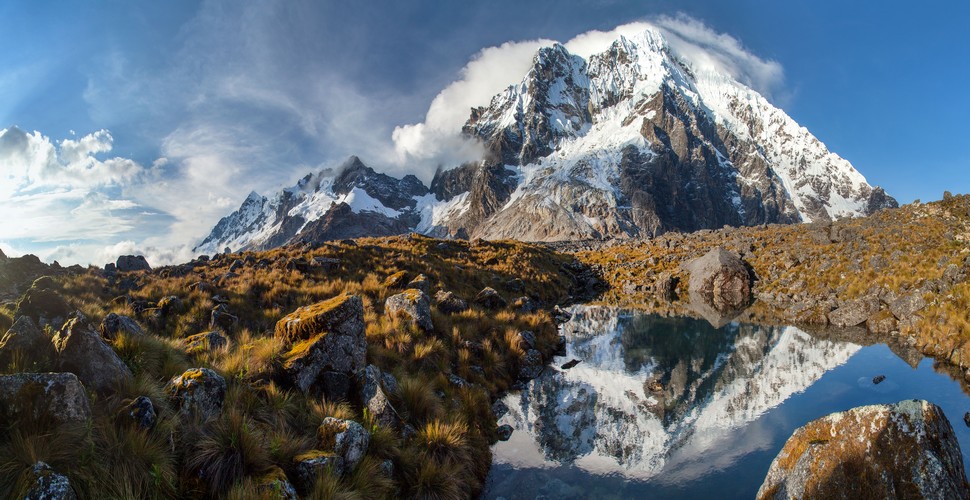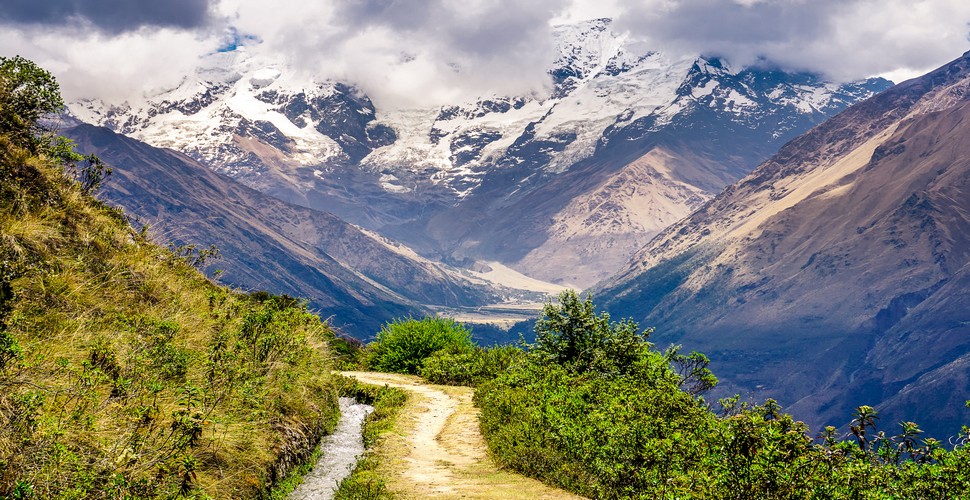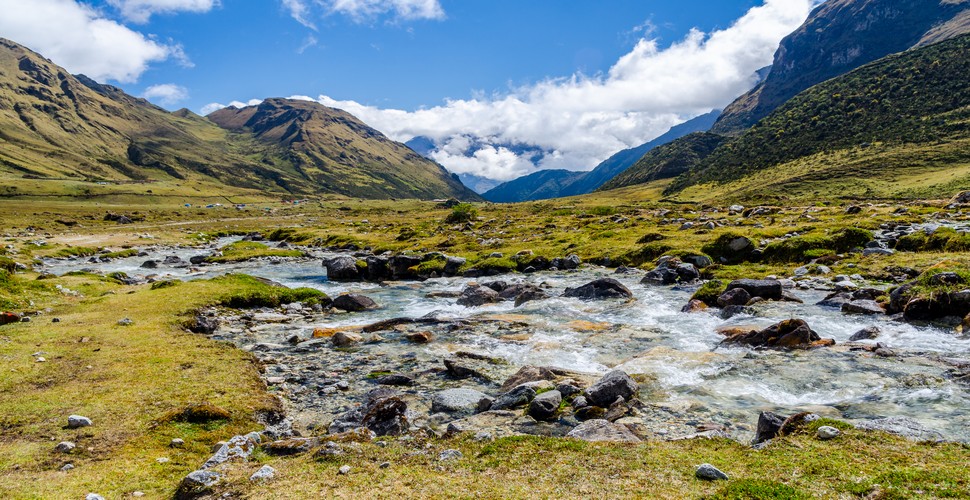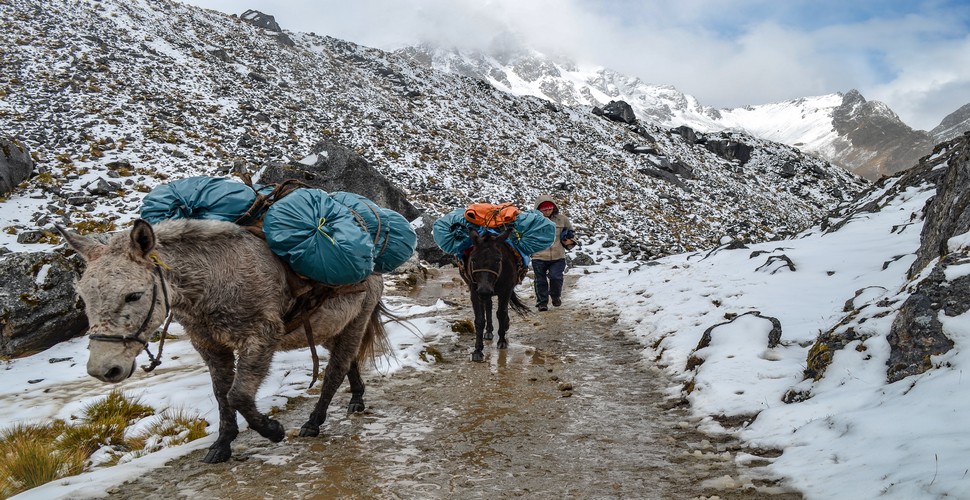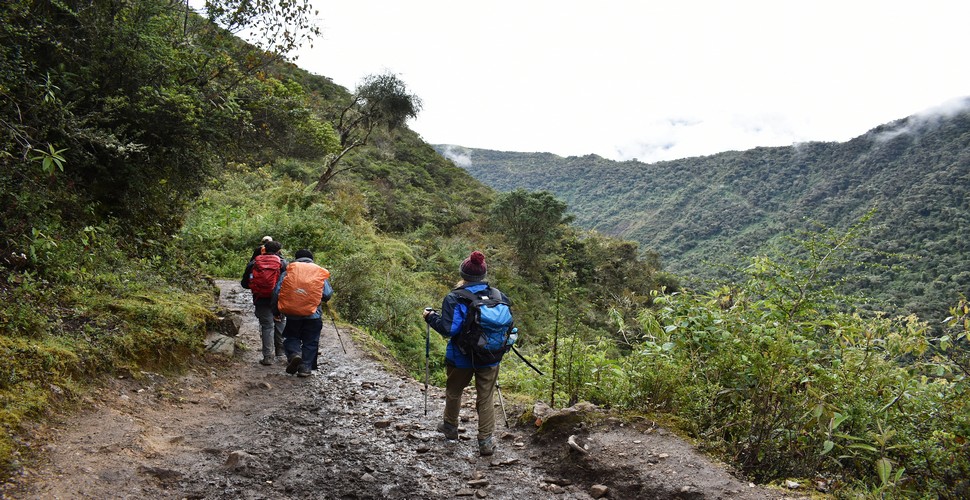

Claire Dean
Travel in South America is a joy to behold. The rich variety of destinations, experiences, landscapes and geography fascinated me so much, that I chose to relocate here, over 20 years ago! The best thing I ever did! Allow me to share my knowledge and passion for Central and South America with you and help you plan your holiday of a lifetime!

THE SALKANTAY TREK - ALL YOU NEED TO KNOW
Written by:Claire Dean
Published: 2022-02-11
The Salkantay Trek is recognized by National Geographic as one of the most stunning treks in the world and it has become increasingly popular as an alternative to the Classic Inca trail. The scenery is arguably more impressive as you will trek through a region of glacial snow-capped mountains, down to the tropics within a few days and the view of Machu Picchu at sunrise is unforgettable. The Salkantay Trek has well-established trails through the wilderness with the occasional small village, and while the Inca Trail may offer comparable views and a few more ruins along the way, the remoteness of Salkantay and the fact that you do not need to reserve a permit is definitely a plus for a lot of people.
The Salkantay Mountain in the Distance
FAQs About Salkantay
The Salkantay trek is one of the most popular treks in the Cusco region after the Inca Trail. What do you need to bring, what is the best time to do the Salkantay Trek, how tough is it and how can you prepare yourself adequately? Some planning ahead can help you have the trek in the Andes of a lifetime and here, we may even convince you that you should do the Salkantay trek instead of the world-famous Inca Trail!
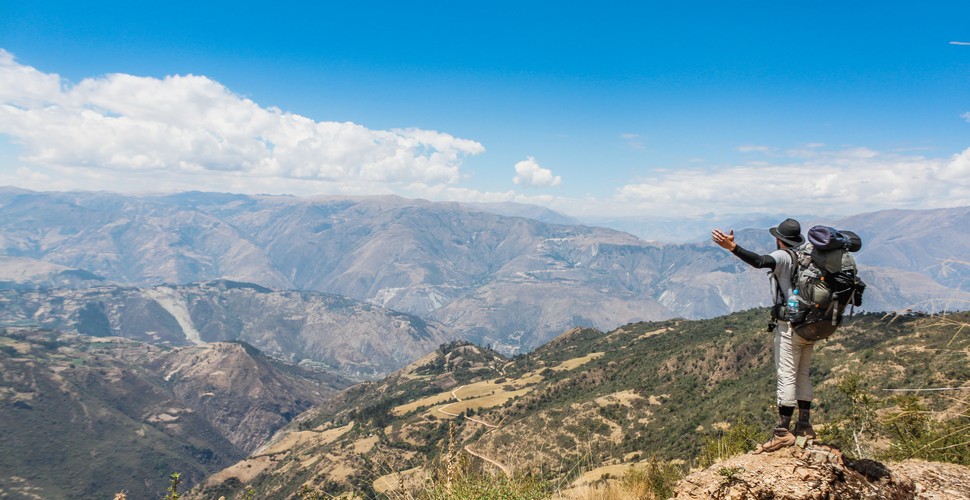
View over the valley
Background Information
The Salkantay trek in Peru is one of the most stunning and breathtaking experiences you can have on your visit to Peru. During this 5-day trekking experience, you will cross different climatic regions, and different elevations, from tropical jungle to icy snow peaks and different flora and fauna. These action-packed days are where you can enjoy Peruvian hospitality and the picturesque mountain villages that you pass through. Let’s be honest, The Salkantay trek isn’t a walk in the park, and going well-prepared is the key to an amazing trekking experience. Acclimatize adequately to avoid altitude sickness, what to take, and what to expect, are all things you can plan for before you even start trekking!
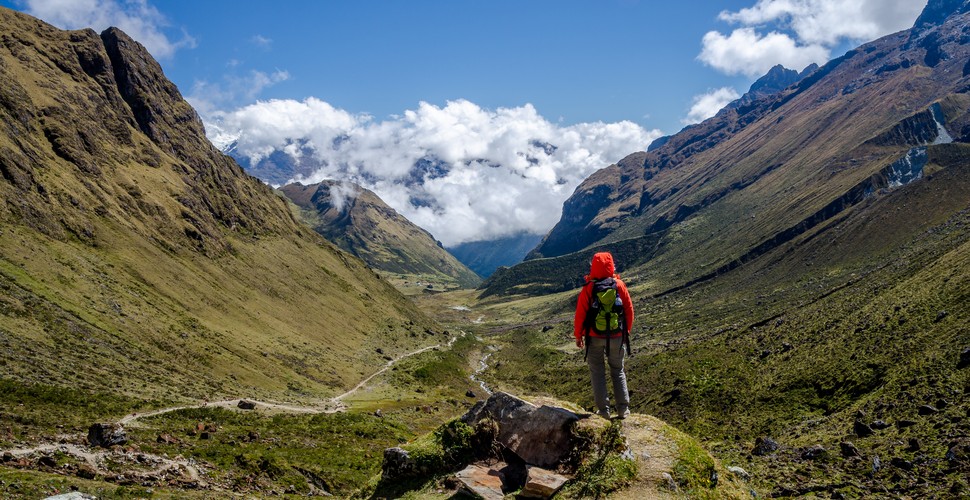
The First Day´s Trekking
Salkantay Fact - Check
- Location: Cusco region, Peru
- Hike duration: 5 days
- Start: Mollepata
- Finish: Aguas Calientes
- Distance: 74 km (46 miles)
- Highest point of the Salkantay Trek: 4580 m
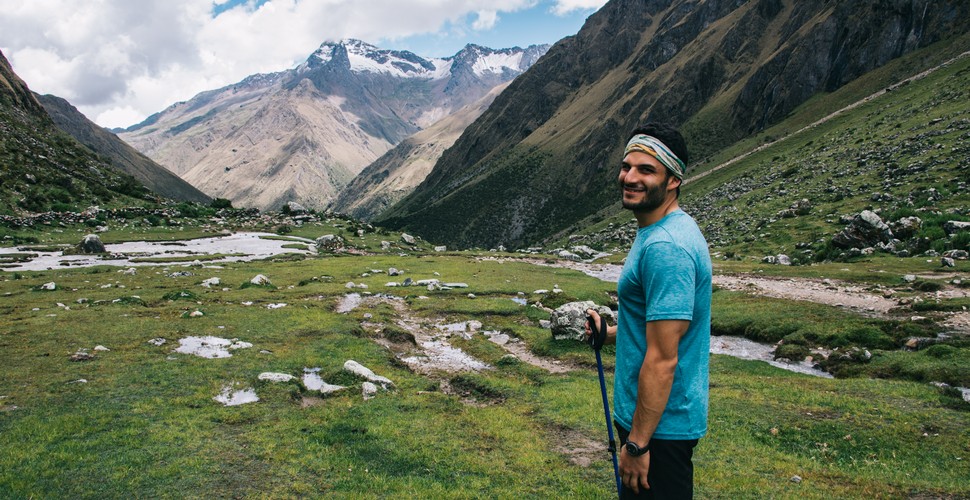
Take in the views
Top Tips For The Salkantay Trek
- The Salkantay Trek is considered a moderate trek, on a scale of easy to difficult, so it’s best to practice and prepare a little beforehand, especially when it comes to fitness. You can definitely take part if you haven’t ever trekked before and these Salkantay trek tips will certainly make life easier.
- Do not hike in new boots. Make sure the hiking boots you choose are comfortable and well-worn in. If you’ve bought new ones, take them on plenty of walks back home so that they are comfy.
- Do some practice hikes at home. Start with short hikes and slowly increase their length. It’s a good idea to head out for long weekends to hike for a few days in a row. This way, you are simulating what you’ll be doing on the trek. Also, try to take walks in places with rough terrain to get used to different footing.
- Hike up hills and mountains, as you’ll also come up against a few on the Salkantay Trek.
- Train with walking poles back home so you get used to them before the trek.
- Do strength and cardio exercises to prepare your muscles and your body becomes accustomed to strenuous exercise.
Beginning The Trek
How Fit Do You Need to Be?
You do need to be healthy and fit to finish The Salkantay Trek, which most people are. You don’t need to be a big hiker or exercise all the time to be able to hike it, but it is recommended to do some physical preparation beforehand.
Most people are able to complete this spectacular hike if they eat well, prepare beforehand with their fitness, and adjust properly to the altitude.
River on The Salkantay Trek
How Strenuous is Salkantay Trek?
The Salkantay Trek is relatively challenging. You’ll be heading up to a very high altitude and also find that the terrain can be tough. Ascending and descending throughout can also be tough on your joints, especially knees and ankles. Walking sticks are highly recommended for this trek. The second day of the trek is the most difficult as you walk for a total of 10 hours and over some difficult terrain. You also need to endure the steep and winding path up to the Salkantay Pass at 4,600 m.
It isn’t necessary to be a marathon runner, to hike the Salkantay trail, however, it is strongly recommended that you do some extra training at home before the trip. In general, the days are long but not excessively difficult. There are adequate resting spots and a long lunch break on each day of trekking. Our advice is to build up a fitness level a month before you travel in which you are used to walking for a few hours. To prepare yourself physically, it is best to do the Salkantay trek after a minimum of three days acclimatizing at high elevation (3000m or more).
Reaching the Summit
The Main Physical Requirements to Take Part in this Trek Are:
- To be in good shape mentally and physically
- Have strong leg muscles
- Have no health issues regarding breathing
- Consume a healthy diet and avoid alcohol prior to the trek
- Be Acclimatized
The Trail
Salkantay Trek and Altitude Sickness
The highest point of The Salkantay Trek is 4,600 m, and the average throughout the route is 3,000 m. For this reason, you need to make sure you’re well prepared for the altitude and the associated problems. If you are not acclimatized properly, you can suffer from nausea, headaches, tiredness, dizziness, and breathlessness. Here are a few ways to make sure you’re prepared to face the altitude. Speak to a doctor back home to see if they can prescribe you any medication to help with altitude sickness, just in case.
In Cusco, you will find oxygen cans and pills at the pharmacies if you need them. Drink coca or muna tea. These have been used since ancient times and are great for helping with the effects of high elevation. Take things easy when you get to Cusco. Limit alcohol intake and don’t overdo things. Rest will help you acclimate.
Spend at least 2-3 days in Cusco or the Sacred Valley before the trek to help your body adjust. The last thing you want is to have to cancel your trek because you have not acclimatized sufficiently so allow appropriate acclimatization time.
Even if you are in tip-top condition and exercise daily, this still hasn’t any influence on lowering the risk of altitude sickness. Altitude sickness can affect anyone, regardless of your fitness level. It is therefore important to acclimatize because once you go beyond 3000 meters elevation, you will definitely feel it. If you travel directly from Lima to Cusco via aeroplane as most people do, you will definitely need to acclimatize for 3 days or more. Walk at a leisurely pace, rest often, and drink plenty of water.
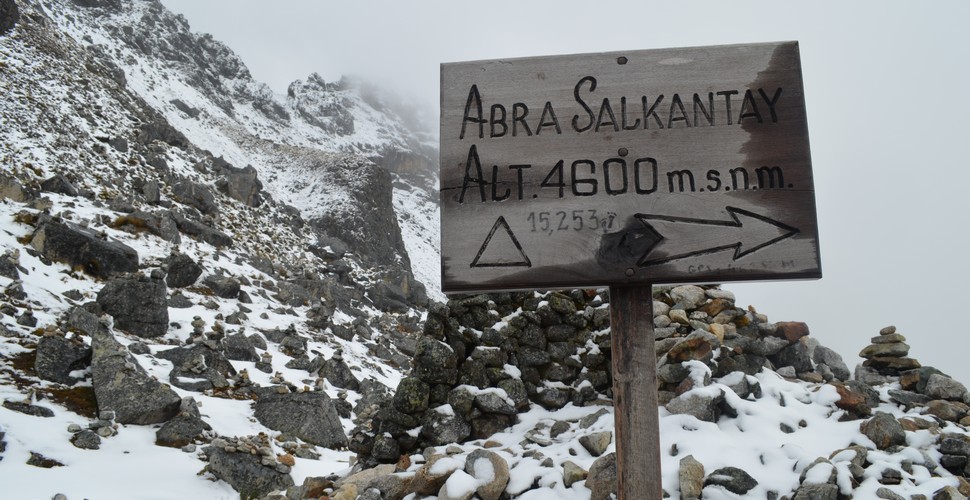
Base of the Salkantay Mountain
The Best Time to do the Salkantay Trek
Cusco has two seasons, the dry season and the rainy season. The dry season is from April to October. The rainy season is from November to March. The rainy season is the worst time for hiking the Salkantay trek.
The best months to hike the Salkantay trek are between May and August. It doesn’t rain much and the temperatures are pleasant, with sunny days and crisp nights. June July and August coincide with the high season due to the summer holidays in Europe and the US, so stick to the shoulder seasons of April and September when there are fewer people, but the weather conditions are still good.
You will Experience all 4 Seasons in One Trek!
The Salkantay trek is the hike to experience all 4 seasons. One day you will wear a T-shirt and shorts for the incredibly hot weather, the next day you will wear all the clothes possible because you at a higher elevation in the mountains near the snow. The fact that you walk through all types of climates and elevations, will offer a number of challenges to your body. Before the day starts, ask your guide what weather they expect so that you dress adequately and don’t have to change during the trek.
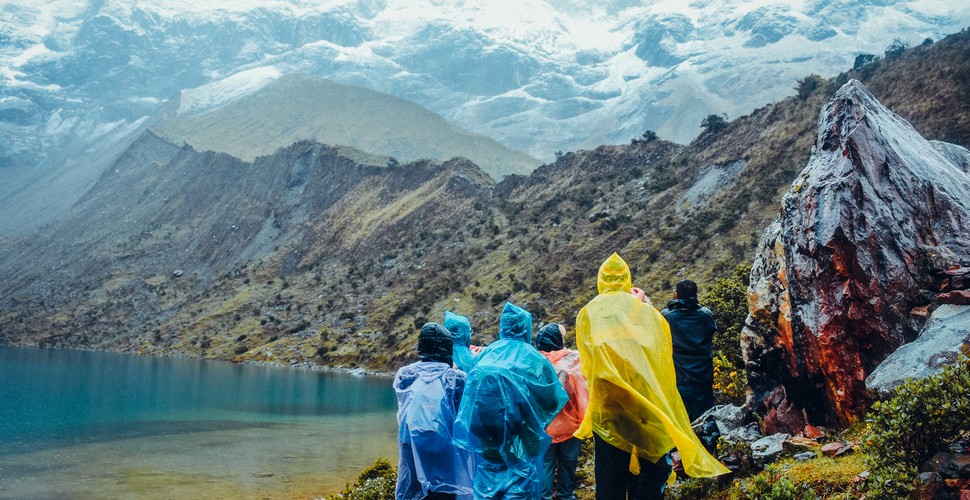
Expect rain
The scenery is spectacular!
The main reason to choose the Salkantay trek has to be the surrounding scenery that will accompany you along the trail. The 5-day hike traverses a number of very different environments and terrains Arguably, other treks to Machu Picchu, have quite similar terrains which can become monotonous. This isn’t the case with the Salkantay trek! Every step of the way, the landscape changes, and the mountains reveal different things to admire. The rolling clouds, the breathtaking terrain, the towering mountains, or the smiling locals. There is a new adventure around every corner!
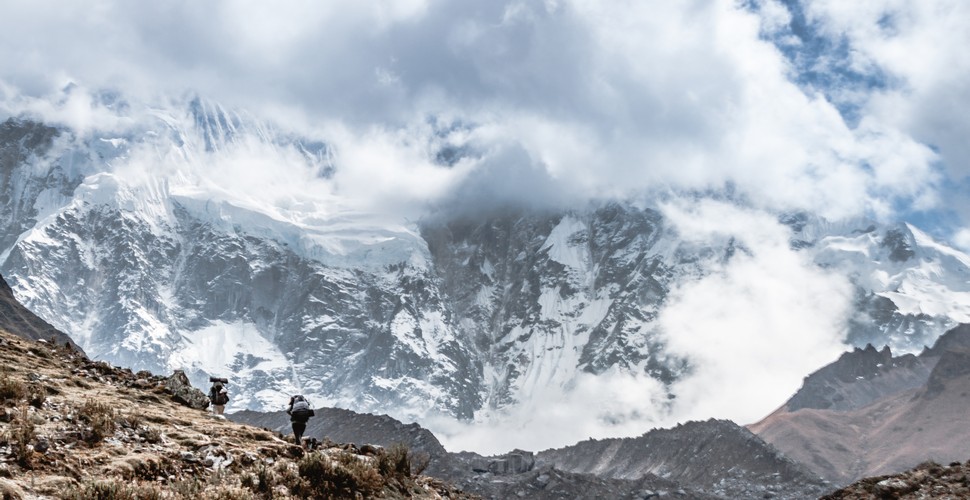
Close to the Glacier
What to bring
Only bring what you really need. You really shouldn’t carry more than 8kg on your back, you will feel it! So, the less you carry the better. You can also hire mules for the first few days to carry your pack (or you!) if need be. The lighter your bag, the more enjoyable the trip. In terms of clothing, it is important to wear layers instead of very heavy clothing and pack for all seasons.
- Backpack with rain cover
- Waterproof shoes
- 5 pairs of underwear and 5 pairs of socks
- 2/3 shirts
- Hiking pants Zip offs are perfect
- Shorts
- A Fleece jacket
- Thermal undershirt
- Thermal pants
- Down Jacket
- Water proof Jacket
- Waterproof pants
- 1 Hat, 1 Bandana
- 1 pair of walking sticks
- Personal hygiene products
- First-aid kit
- Water purifying drops
- Money + snacks
- Passport
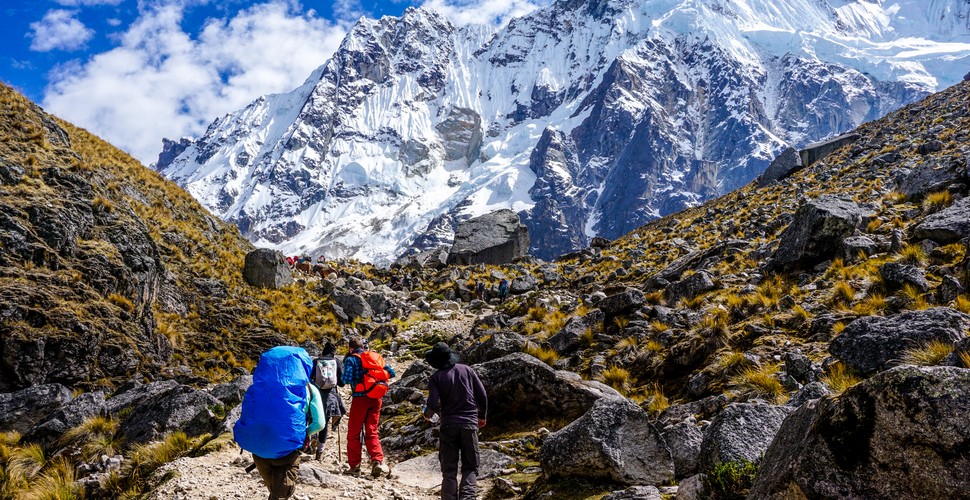
Pack light!
Salkantay vs Inca Trail?
One of the most frequently asked questions: which route is the best to hike to Machu Picchu? The Salkantay vs Inca Trail are often compared with each other and there are advantages for each route. The Salkantay trek offers different scenery every day, the height gains are better distributed and it is less stressful for your knees. Unlike The Inca trail which has many high steps. The Inca trail is of course the most famous trek and the trail that the Incas used to walk to Machu Picchu. The cultural experience of the Inca trail is better, with more archaeological sites along the way. The disadvantage is that you have to book months in advance because only 500 people, including porters (only 200 trekkers) can hike the trail each day. Many trekkers also who have walked both, indicate that the scenery and terrain during the trek remain the same, the Salkantay Trek is much more varied one day you hike through glaciers and mountains, and the next, you are trekking in the jungle.
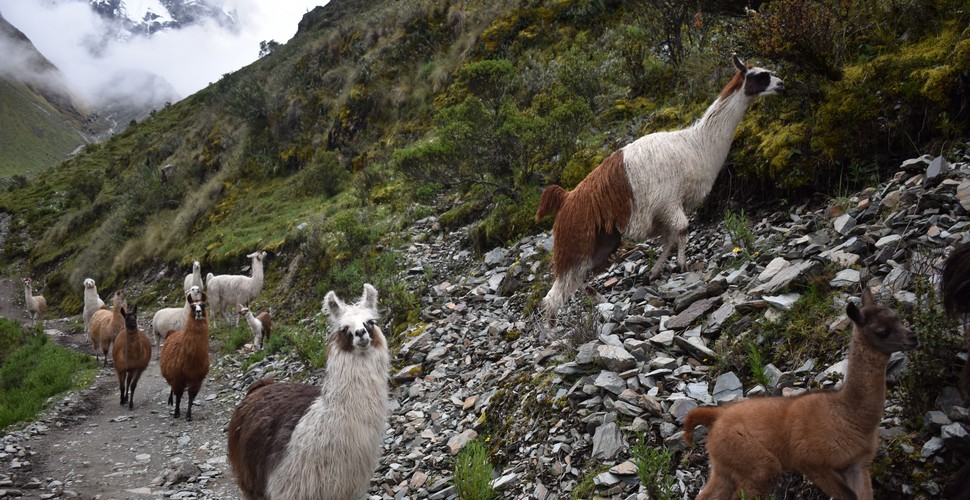
Furry Friends Along The Route
Of course, the ultimate destination of this trek is Machu Picchu itself. If you want to trek to Machu Picchu via The Salkantay Trek, you will now be better prepared for your adventure in The Andes. Ask us here for more information!
Happy Trekking!


